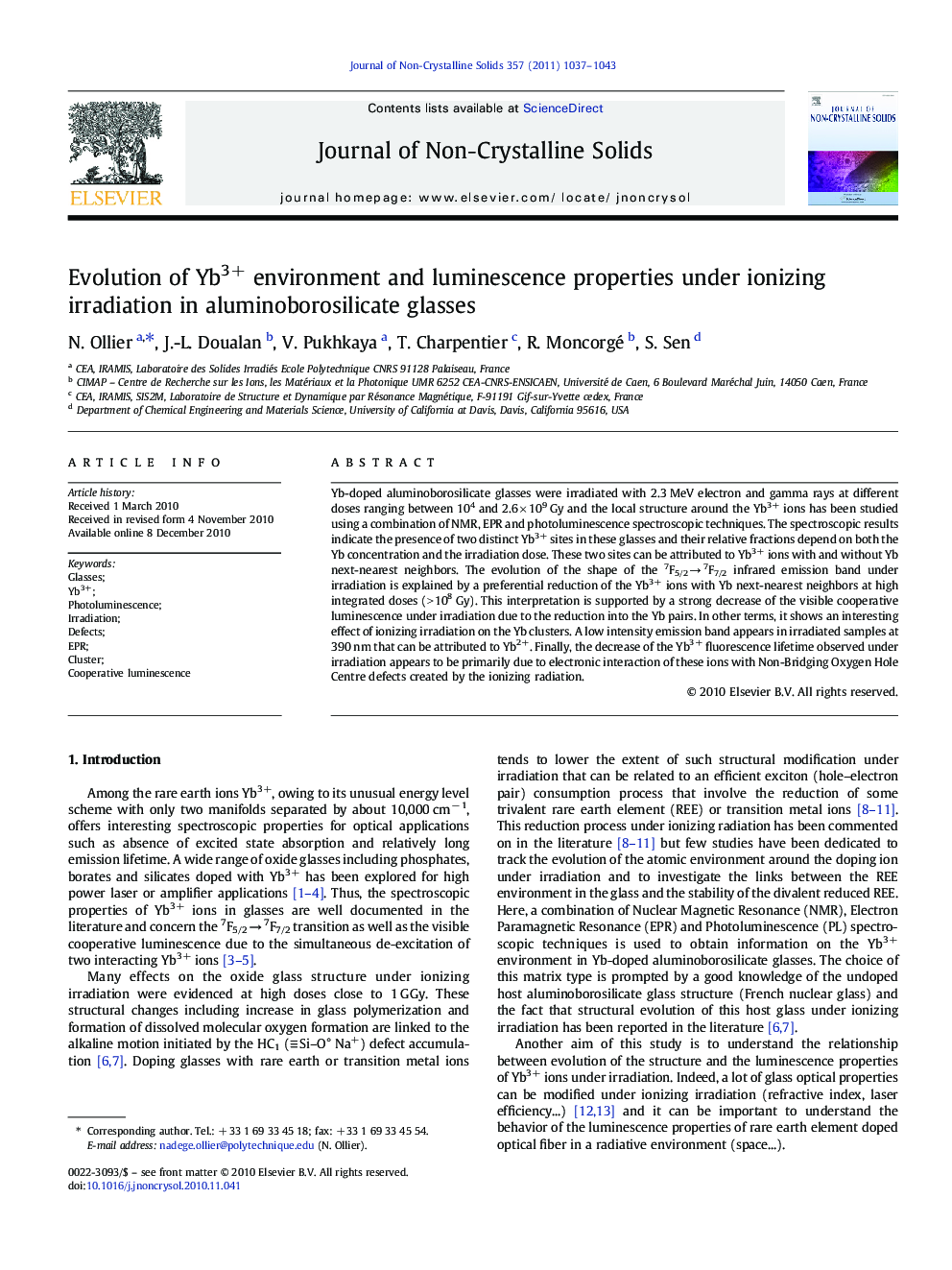| Article ID | Journal | Published Year | Pages | File Type |
|---|---|---|---|---|
| 1482468 | Journal of Non-Crystalline Solids | 2011 | 7 Pages |
Yb-doped aluminoborosilicate glasses were irradiated with 2.3 MeV electron and gamma rays at different doses ranging between 104 and 2.6 × 109 Gy and the local structure around the Yb3+ ions has been studied using a combination of NMR, EPR and photoluminescence spectroscopic techniques. The spectroscopic results indicate the presence of two distinct Yb3+ sites in these glasses and their relative fractions depend on both the Yb concentration and the irradiation dose. These two sites can be attributed to Yb3+ ions with and without Yb next-nearest neighbors. The evolution of the shape of the 7F5/2 → 7F7/2 infrared emission band under irradiation is explained by a preferential reduction of the Yb3+ ions with Yb next-nearest neighbors at high integrated doses (> 108 Gy). This interpretation is supported by a strong decrease of the visible cooperative luminescence under irradiation due to the reduction into the Yb pairs. In other terms, it shows an interesting effect of ionizing irradiation on the Yb clusters. A low intensity emission band appears in irradiated samples at 390 nm that can be attributed to Yb2+. Finally, the decrease of the Yb3+ fluorescence lifetime observed under irradiation appears to be primarily due to electronic interaction of these ions with Non-Bridging Oxygen Hole Centre defects created by the ionizing radiation.
Research Highlights► There are two distinct Yb3+ environments in the studied aluminoborosilicate glasses. ► Ionizing irradiation leads to a strong decrease of the Yb3+ cooperative emission. ► The Yb3+ lifetime decrease is linked to an interaction with the NBOHC defect.
